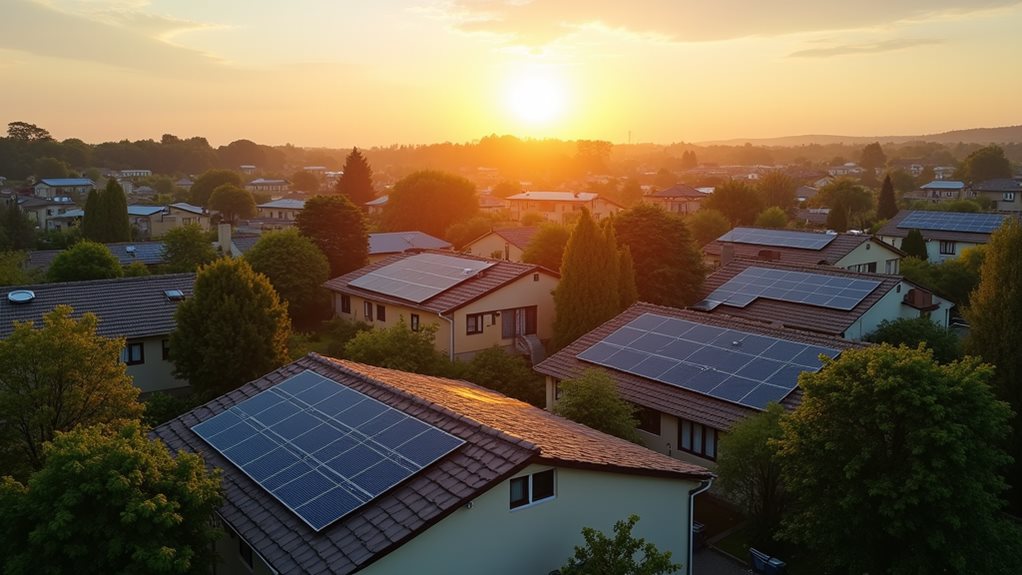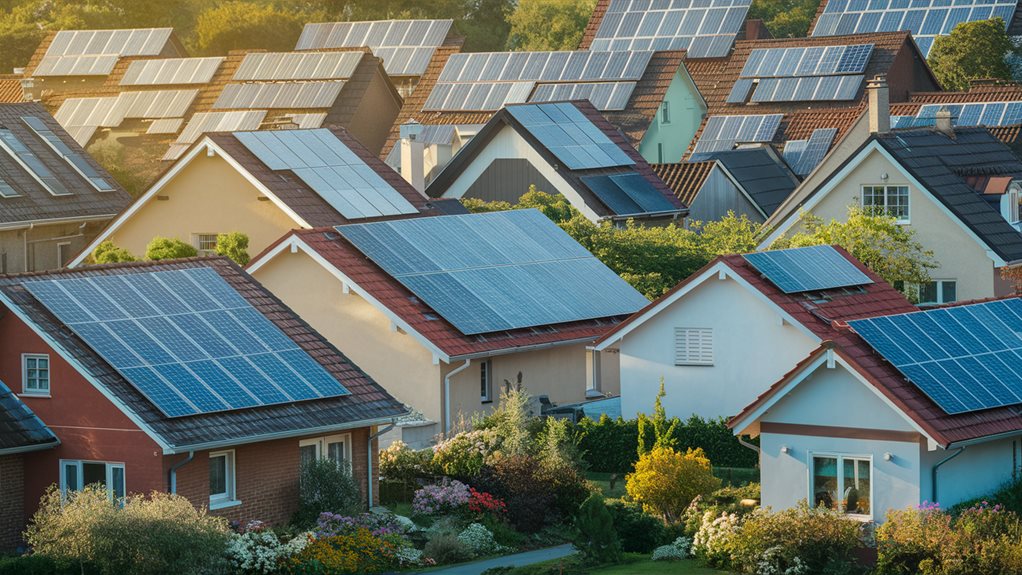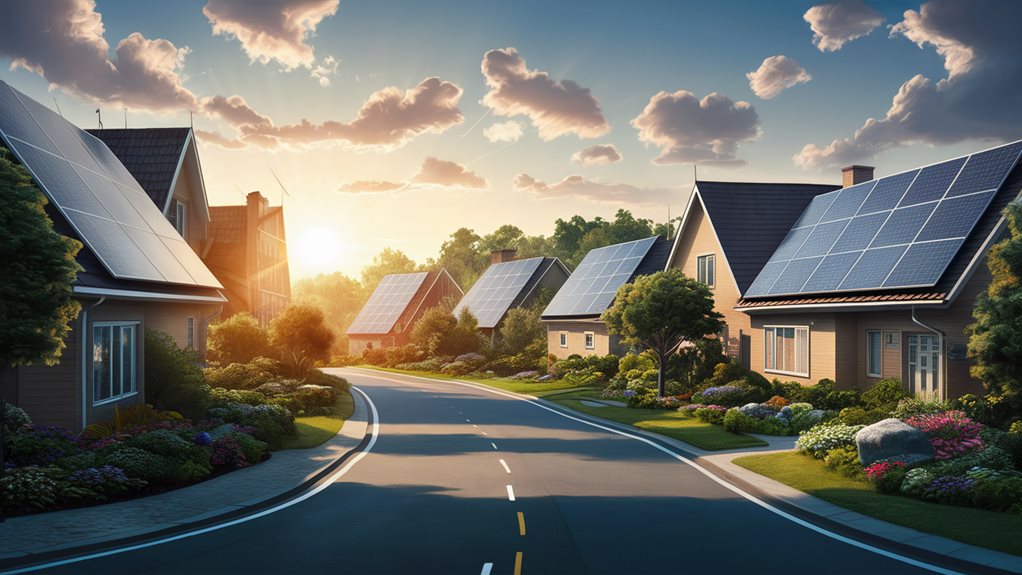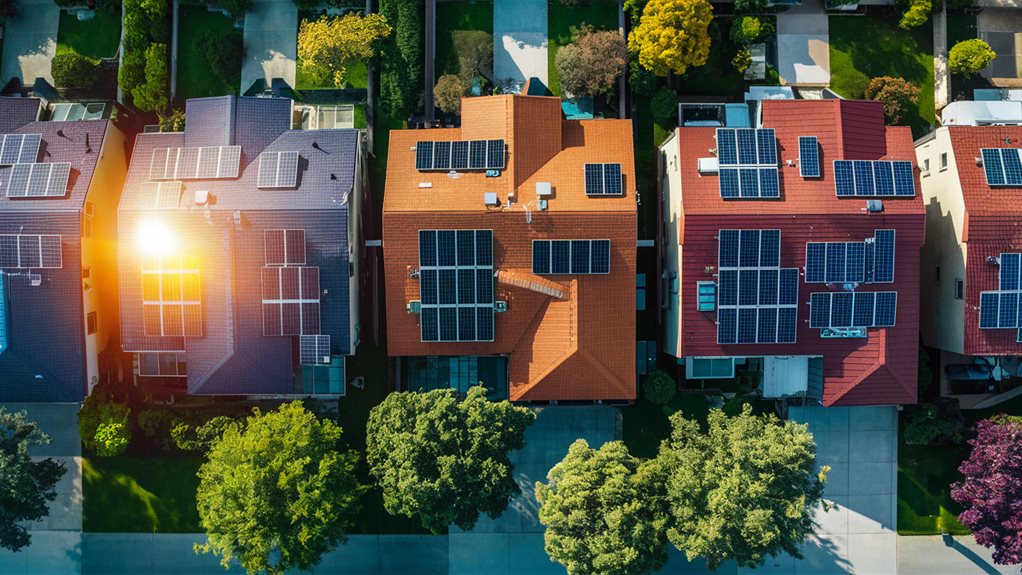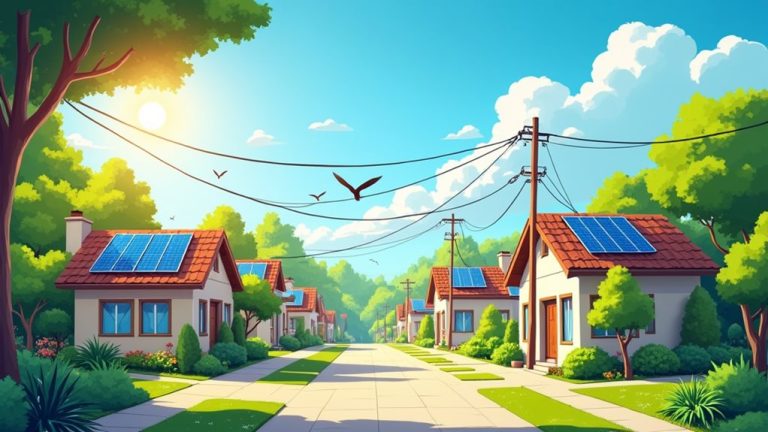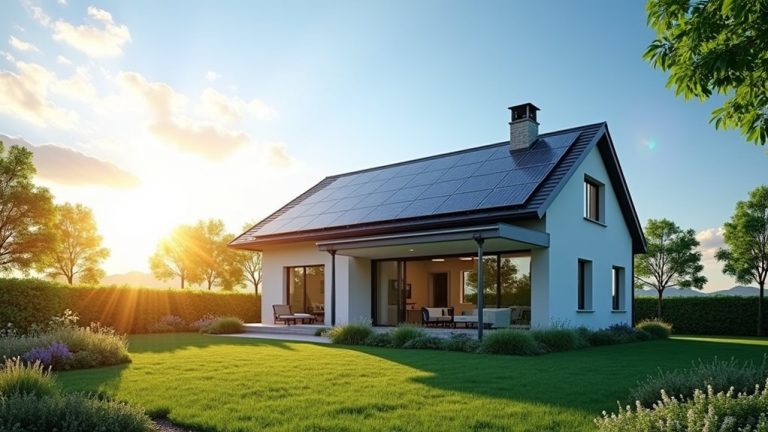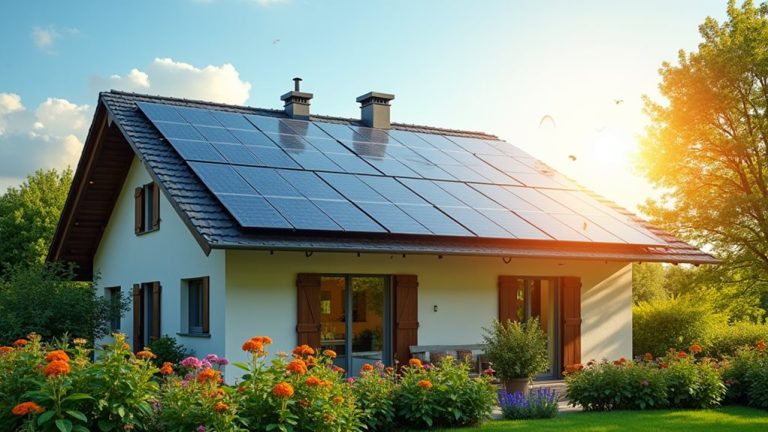In recent years, residential solar systems have emerged as a cornerstone of sustainable energy strategies, promising significant benefits in efficiency, cost savings, and environmental impact. However, as homeowners increasingly shift towards solar energy, questions about the long-term sustainability of these systems loom large. Key factors to mull over include the durability of solar panel materials, advancements in battery technology, and the evolving landscape of financial incentives. While the potential for reduced carbon footprints and energy independence is enticing, one must contemplate whether current systems are indeed equipped to maintain these promises over decades. What challenges and opportunities lie ahead?
Expert Highlights
- Improved solar panel efficiency and inverter advancements enhance long-term sustainability of residential solar systems.
- Continuous cost reductions in solar panel production and installation bolster the financial viability of residential solar systems.
- Solar systems significantly reduce carbon emissions, contributing to a cleaner, sustainable energy future.
- Minimal maintenance and slow performance degradation ensure sustained efficiency and longevity for residential solar systems.
- Economic benefits, like long-term electricity savings and increased property value, support the sustainability of residential solar investments.
Overview of Solar Systems
In a residential solar system, various types of solar panels, such as monocrystalline and polycrystalline, are pivotal for capturing sunlight effectively to generate electricity. These systems can benefit from advanced optimization technology that minimizes power loss and ensures high efficiency. Key components, including inverters, optional batteries, and meters, guarantee the conversion and storage of this energy, enabling efficient usage and monitoring. Proper installation and regular maintenance are essential to maximize system performance and longevity, managing factors such as panel orientation, wiring, and routine inspections.
Types of Solar Panels
Solar panels are an essential component of residential solar systems, providing a means to convert sunlight into usable energy. The main types include monocrystalline, polycrystalline, thin film, and PERC panels.
Monocrystalline panels offer 16.5% to 22% efficiency, while polycrystalline range from 15% to 17%. Thin film panels are less efficient, at 10% to 13%. PERC panels improve this, with efficiencies of 17% to 19.5%. Monocrystalline panels stand out for their highest efficiency, making them a preferred choice for homeowners looking for long-term sustainability and performance.
Solar System Components
Efficiency and innovation drive the core components of residential solar systems. Essential parts include:
- Solar Panels: Generate DC power, primary source of solar energy.
- Inverters: Convert DC to AC, bridge to the grid.
- Racking and Mounting: Provide structural support.
- Monitoring and Batteries: Track performance, store energy.
- Charge Controllers: Regulate electrical charge, safeguard batteries.
These components guarantee effective solar energy utilization. Additionally, the balance of systems ensures power control and distribution, which is vital for the safe and reliable operation of solar systems.
Installation and Maintenance Essentials
Proper installation and diligent maintenance are pivotal for maximizing the efficiency and longevity of residential solar systems.
Solar energy is an environmentally friendly power generation solution that provides significant cost savings for homeowners. A thorough site evaluation guarantees ideal panel positioning, while secure mounting and quality electrical connections enhance safety and functionality. Adhering to best wiring practices minimizes energy losses, and regular maintenance—such as cleaning and system performance monitoring—ensures continued compliance with regulations and optimizes energy output for sustainable, long-term operation.
Benefits
Adopting residential solar systems offers significant advantages including reduced energy expenses and a minimized carbon footprint. Homeowners can experience an increase in property value while bolstering their energy independence. These systems not only provide financial relief but also contribute to environmental sustainability by promoting cleaner energy solutions. Solar energy systems harness "renewable electricity" from the sun using photovoltaic panels, leading to fewer greenhouse gas emissions and a more sustainable energy future.
Lowering Energy Bills
In the domain of residential energy solutions, solar systems stand out for their significant potential to lower energy bills. Available benefits include:
- Savings from reduced or eliminated electricity bills
- Achieving a break-even point within 6-10 years
- Substantial annual savings, e.g., $835-$1,878 in California
- Increased property value
- Long-term savings over 25 to 30 years
With solar panels requiring minimal maintenance and performance degradation typically less than 1% per year, these factors contribute to financial relief amidst rising electricity costs.
Reducing Carbon Footprint
Solar energy installations offer a compelling advantage in reducing carbon footprints, particularly when compared to traditional energy sources. Solar panels markedly reduce CO2 emissions, with an emissions intensity of only 95 pounds/MWh versus 1,071 pounds/MWh from natural gas. Annually, an acre of solar can save up to 198 metric tons of CO2, achieving 80% lower emissions over fossil fuels for residential energy needs. Additionally, the installation of residential solar significantly contributes to a cleaner, greener future by minimizing environmental impact.
Increasing Home Value
When homeowners integrate solar panel systems, they often experience a notable increase in their property's market value. A significant factor contributing to this boost is the additional premium of residential solar panels, which can offset the added system cost.
Key benefits include:
- Increased Home Value: By 3% to 4%.
- Higher Selling Price: Approximately $20,000 increase in California.
- Faster Sale: 20% quicker than non-solar homes.
- Premium Selling Price: 24.7% more likely to exceed the asking price.
- Environmental Appeal: Attractive to eco-conscious buyers.
Energy Independence Gains
Harnessing solar energy provides homeowners with significant strides toward energy independence, offering both environmental and economic benefits. Solar panels facilitate a reduction in carbon emissions and reliance on fossil fuels, while boosting natural resource conservation. Furthermore, achieving energy independence aligns with Massachusetts' clean energy goals, promoting a sustainable future. Economically, they offer stable, long-term financial savings and protection against rising energy costs. Additionally, solar energy enhances reliability, providing a consistent energy supply and reducing vulnerability to power outages.
Installation Cost Trends
Over the past decade, the installation costs for residential solar systems have steadily decreased, largely due to advancements in technology and increased production efficiency. The impact of financial incentives and rebates, such as the 30% federal tax credit, further reduces the net cost, making solar energy more accessible to homeowners. However, material and labor costs, influenced by global supply chain dynamics and regional factors, contribute to variations in final pricing. For instance, ground mount systems are an option for homeowners whose roofs cannot accommodate the necessary number of solar panels.
Price Decrease Over Time
The landscape of residential solar system costs has undergone a significant transformation, marked by a remarkable 60% decrease since 2010. Several factors have contributed to this decline:
- Technology advancements: Improved solar panel efficiency.
- Market competition: Drives prices down.
- PV module price drop: An 85% reduction.
- Reduction in utility-scale costs: Significant drops since 2010.
The average installation cost is approximately $21,816 for a 7.2 kW system.
Incentives and Rebates Impact
In the ever-evolving world of residential solar installations, incentives and rebates serve as essential mechanisms that shape cost trends and affordability. Federal and state incentives like the Federal Solar Tax Credit and regional rebates can decrease installation costs substantially, while utility-specific export credits offer further financial relief.
As installation expenses fall, these financial incentives enhance solar's appeal, promoting sustainable growth in residential adoption.
Material and Labor Costs
Building upon the financial boost provided by incentives and rebates, the cost dynamics of residential solar systems are fundamentally shaped by material and labor expenses.
Notable long-term trends include:
- Solar panel cost declines by over half since 2010.
- Increased efficiency and competition fostering price drops.
- Ongoing advances projecting future reductions.
- Rising soft costs, impacting overall expenses.
- Essential innovations required for further cost efficiency.
FAQ
How Do Weather Patterns Impact the Efficiency of Solar Systems Over Time?
Weather patterns substantially affect solar system efficiency over time by influencing temperature, cloud cover, wind, and exposure to extreme weather. Variability in these factors leads to immediate efficiency fluctuations and accelerates long-term performance degradation of solar panels.
What Are the Maintenance Requirements for Solar Systems in Different Climates?
Maintenance requirements for solar systems vary by climate. Arid regions demand frequent dust removal, while coastal areas necessitate mold prevention and waterproofing. Temperate climates require seasonal checks, and snowy regions focus on snow removal and damage inspections.
Can Residential Solar Systems Be Integrated With Home Energy Storage Solutions?
Residential solar systems can indeed be integrated with home energy storage solutions, enhancing energy independence, reliability, and cost efficiency. This integration offers households substantial benefits, such as grid reliance reduction, backup power availability, and electricity bill savings.
How Do Shading and Surrounding Vegetation Affect Energy Output in the Long Term?
Shading from surrounding vegetation extensively reduces solar energy output by obstructing sunlight, decreasing panel efficiency. Regular maintenance, strategic placement, and mitigation techniques, like microinverters, are vital for maintaining consistent energy performance and minimizing long-term efficiency losses.
Are There Specific Building Codes That Impact the Longevity of Solar Installations?
Yes, building codes such as the International Residential Code and International Building Code impact solar installation longevity by enforcing structural, electrical, and safety requirements. Local amendments may apply, highlighting the importance of jurisdiction-specific knowledge for compliance and durability.
Experts Final Thoughts
The long-term sustainability of residential solar systems is underscored by significant advancements in technology, cost reductions, and environmental benefits. Improved solar panel efficiency, better energy storage solutions, and easier installation processes have facilitated broader adoption. Additionally, declining installation costs and module prices, alongside financial incentives and rebates, enhance affordability. The environmental advantages, particularly in reducing carbon emissions, further underscore their value. With proper maintenance, these systems promise enduring energy savings and increased property values, making them a sound investment.





